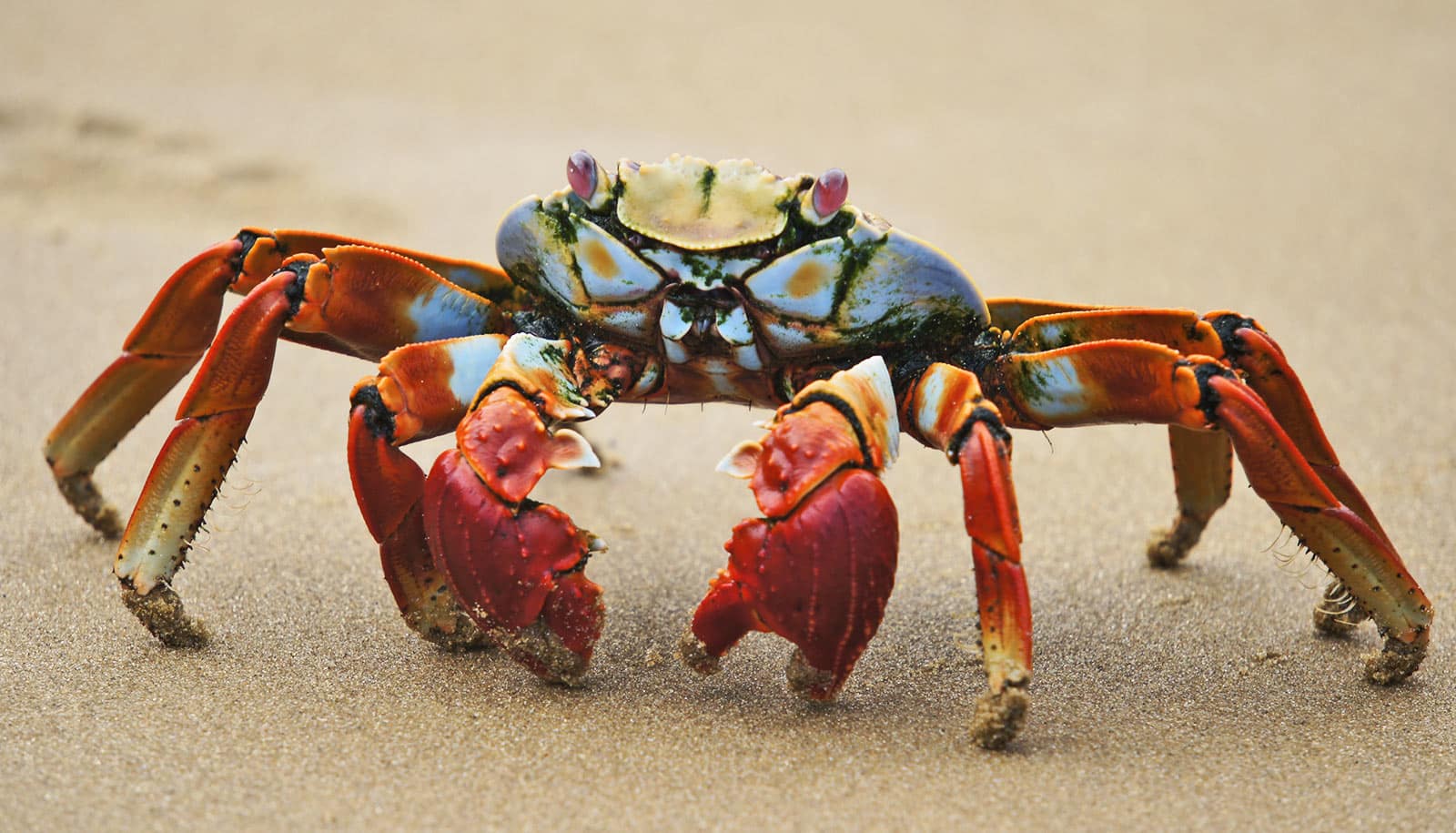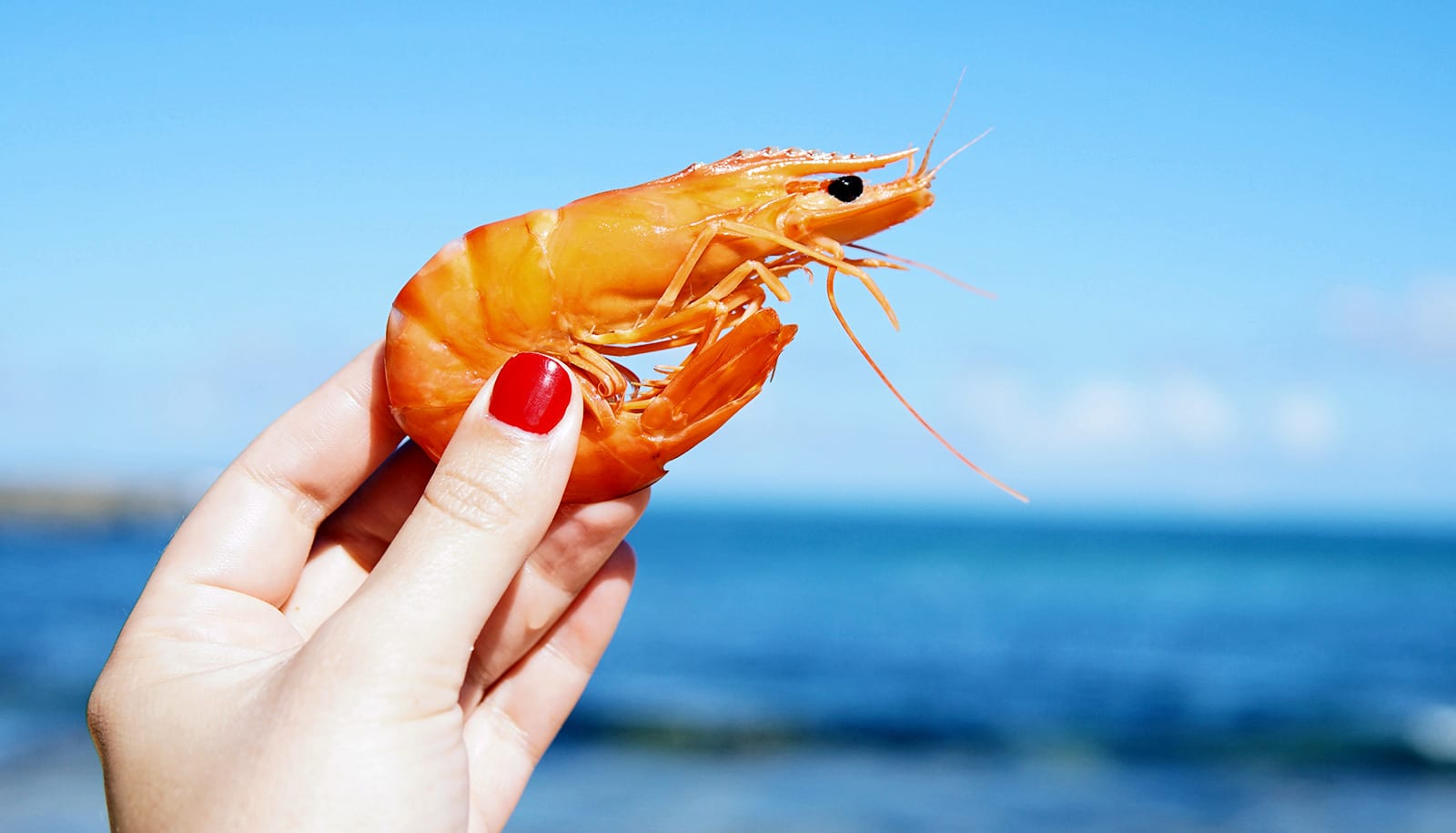Materials with enhanced structure derived from crustaceans and seaweed could be part of a next-generation answer to the challenge of replacing petroleum-based plastic films, according to a new study.
Combining chitosan, a biopolymer that makes crab shells hard, with agarose, a biopolymer extracted from seaweed that is used to make gels, creates unique biopolymer composite films with enhanced strength. The films are also biodegradable, have antibacterial properties, repel water, and are transparent.
The findings could eventually lead to sustainable packaging films for food and consumer goods.
“How do we find sustainable replacements for synthetic polymers?” asks Orlin Velev, professor of chemical and biomolecular engineering at North Carolina State University and corresponding author of the study in Cell Reports Physical Science.
“Synthetic polymers make very good films, but we want to replace them with natural biopolymers. The question becomes how do we adjust the joint structure of these natural polymers—in our case, agarose and chitosan—so we can have all the desirable properties of synthetic polymers inside a sustainable, biodegradable film?”
It may not be enough to simply mix chitosan and agarose together. Velev says previous efforts to produce such mixtures reported improvements in properties, but when dried created gritty films that may lack the right strength.
Instead, Velev and his collaborators took a different approach, reinforcing the agarose films with fibrillated colloidal scale material—called soft dendritic colloids—made from chitosan. The strong chitosan micro- and nanoscale fibrils are hierarchically branched to provide strength and stability to the agarose film where they are embedded.
“It is challenging to modify natural polymers chemically, but we can alter their morphology and use them as composites,” says first author Yosra Kotb, a PhD graduate student.
“We use chitosan dendritic particles to reinforce the agarose matrix because of the compatibility of both materials leading to good mechanical properties; chitosan particles also have an opposite charge to agarose. When mixed, these charges are neutralized so the resulting materials also become more resistant to water.”
The biopolymer composites are about four times stronger than agarose films alone, the research shows, and also resist E.coli, a commonly studied bacterium. The paper also showed that a sheet made from biopolymer composite films greatly degraded after a month underground, while, for comparison, common plastic films such as sandwich baggies remained completely intact after the same period underground.
“Interestingly, our composite is initially strongly antibacterial,” Velev says, “but because it is made from natural materials, after some time bacteria will still colonize it—so after a month underground it will biodegrade readily.”
Velev adds that his lab will continue working to make improvements in the structure of the biopolymer composite films with the goal of eventually matching the properties of synthetic polymer ones.
“If you package food, you want the package to be impermeable to oxygen and water,” he says. “But natural materials are permeable, so we will continue to work to make our films more impermeable to water and oxygen.”
Increasing the scalability of the material production process is also one of the future goals.
“How do you make the polymer substitute film in a continuous process that is rapid enough to make it in large enough amounts—like papermaking?” Velev says.
NC State has filed a patent application on the new biopolymer composite films and the process for creating them. The National Science Foundation supported the work.
Source: NC State



